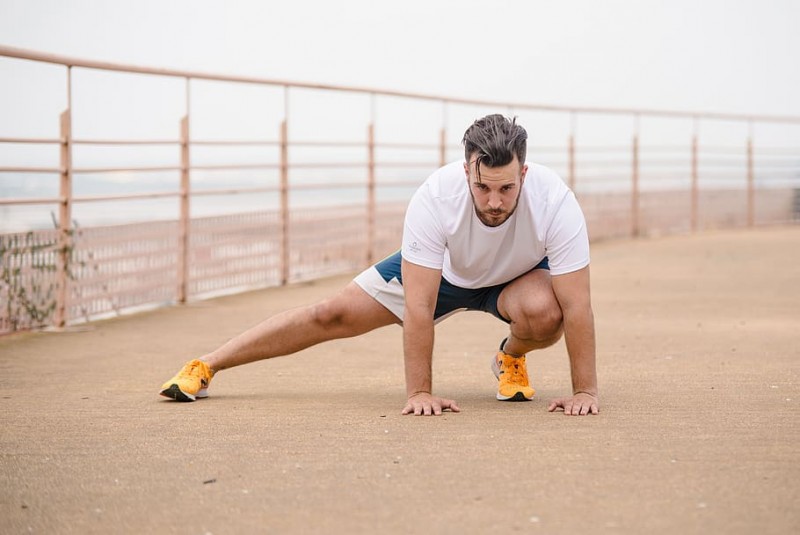
Starting a new exercise routine at the gym can be an exciting step towards better health and fitness. However, it’s crucial to take certain precautions to ensure that you’re not putting your heart at unnecessary risk. Many people jump into their workout regimes without considering their heart health, which can lead to serious complications, including heart attacks. Here’s a detailed guide on what you should do before starting your gym workouts to minimize these risks.
1. Check Your Resting Pulse Rate
Why It Matters:
Your resting pulse rate, or the number of heartbeats per minute while at rest, is a good indicator of heart health. A normal resting pulse rate for adults typically ranges from 60 to 100 beats per minute. Checking your pulse rate can help you assess if your heart is functioning efficiently.
How to Check:
Sit quietly for a few minutes before taking your pulse.
Place your index and middle fingers on your wrist, just below the base of the thumb, to feel your pulse.
Count the number of beats for 60 seconds, or count for 30 seconds and multiply by two.
What to Look For:
A resting pulse rate above 80 beats per minute might be a sign of poor cardiovascular health. If your pulse rate is higher than normal, consult with a healthcare professional before starting intense exercise routines.
2. Assess Your Heart Rate Response to Light Exercise
Why It Matters:
How your heart rate responds to light exercise can provide insights into your cardiovascular health. It helps you understand how your heart handles increased physical activity.
How to Do It:
After checking your resting pulse rate, begin with a light warm-up, such as a 10-minute walk or light jog.
Immediately after your warm-up, measure your pulse rate again to see how much it has increased.
What to Look For:
If your heart rate increases significantly and remains elevated for an extended period after exercise, it may indicate that your heart is under strain. This could be a sign that you need to build up your fitness level gradually or seek medical advice.
3. Monitor Your Pulse Rate After Recovery
Why It Matters:
Monitoring how quickly your pulse rate returns to its resting rate after exercise is crucial. A slower recovery time can be a sign of cardiovascular issues.
How to Do It:
After your warm-up, rest for one minute and then check your pulse rate again.
Compare this post-exercise pulse rate with your resting pulse rate.
What to Look For:
If your pulse rate doesn’t return to near resting levels quickly (within a minute or so), this may suggest that your cardiovascular system is not coping well with the exercise. If this is the case, consult a healthcare professional before continuing with your exercise routine.
4. Consult a Healthcare Professional
Why It Matters:
Even if your pulse rate seems normal, it’s always a good idea to consult with a healthcare professional before starting a new exercise regime, especially if you have pre-existing health conditions or risk factors.
How to Proceed:
Schedule a visit with your doctor to discuss your fitness plans.
Consider undergoing a cardiovascular screening if recommended.
What to Look For:
Your doctor may suggest specific tests or evaluations to ensure that your heart is healthy enough for exercise. Follow their advice to ensure a safe workout experience.
5. Start Gradually
Why It Matters:
Jumping into high-intensity workouts can be stressful for your heart, particularly if you are new to exercise or have been inactive for a while.
How to Do It:
Begin with lower intensity exercises and gradually increase the intensity as your fitness level improves.
Pay attention to how your body responds to each level of exercise.
What to Look For:
Ensure that you are able to complete your workouts without undue strain or discomfort. If you experience symptoms such as shortness of breath, dizziness, or chest pain, stop exercising and consult a healthcare professional immediately.
Taking these steps before starting your exercise routine at the gym can significantly reduce your risk of cardiovascular issues. By monitoring your pulse rate, assessing your heart’s response to exercise, and consulting with a healthcare professional, you can ensure a safer and more effective workout experience. Remember, your heart health is crucial, and taking these precautions can help you enjoy your fitness journey without unnecessary risks.
Know The Health Benefits of Eating Papaya on an Empty Stomach
54th GST Council Meeting Scheduled for September 9, 2024: Check Key Highlights
World PT Day 2024: Celebrating the Vital Role of Physiotherapists